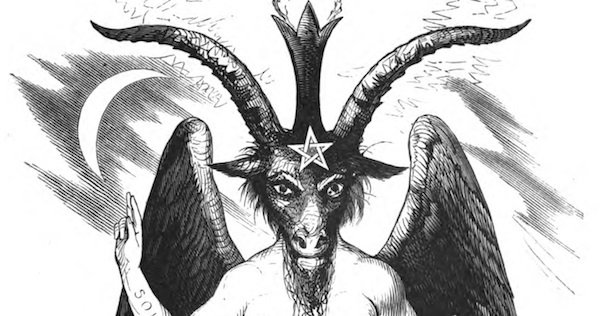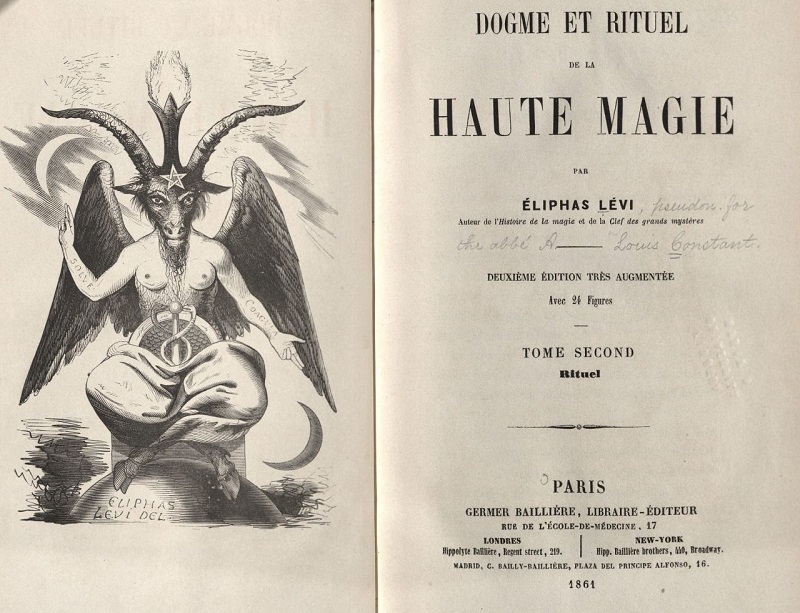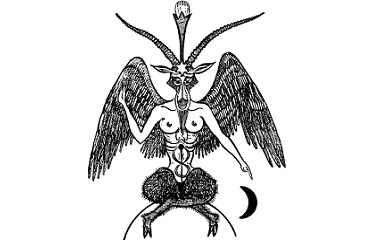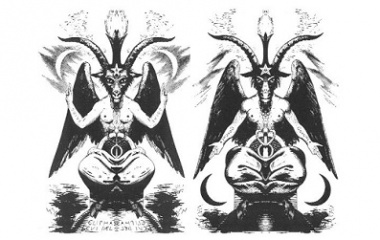With the head of a goat and the body of a man, Baphomet remains one of the most controversial deities to appear in history. Often confused with Satan and a dark history, the goat-headed man is a mystery that dates back hundreds of years. Though the history of Baphomet is known to have begun with the Knights of the Templar, it is thought that the creature has its origins in other religions.
Who is Baphomet?
Baphomet first came to power in the early 14th century with the Knights of the Templar. He was a deity that was extremely controversial – especially since it is a possibility that he has his roots in Islamic and/or Egyptian religion. The timeline of Baphomet’s emergence is still somewhat unclear, though it is still possible to get a general idea of the inspiration behind the deity.

The First Mention of Baphomet
The first historical record of Baphomet comes from a letter written by a crusader in t 1098. In the letter, he explains that the enemies of the Crusaders could often be heard calling upon ‘Baphometh.’ There is also a record that says the mosques were called ‘Bufmarias.’ These connections suggest that the word Baphomet may have been a mispronunciation of the name ‘Mohammed.’ If Baphomet is, indeed, a mispronunciation of Mohammed, it would explain why he is seen as an evil entity by many in modern day. This would imply that by worshiping Baphomet, the Knights of the Templar were actually adopting Islamic practices – a crime that would not be ignored by the Catholic Church. To truly understand the dynamics at work behind the creation of Baphomet, it is important to look at the Knights of the Templar and the Crusades.
The Knights of the Templar
The Knights of the Templar were one of the most skilled groups of warriors that fought the Crusades. These missions – which were aimed at reclaiming the holy land from Muslim rule – put the Knights Templar in the Middle East for quite some time. During these years, they interacted with people who believed in Islamic teachings. This is where it is believed that they first came in contact with ‘Baphomet.’
When the Knights Templar engaged in battle with the troops of the Islamic forces, records show that they often heard their enemies call out to ‘Baphomet’ before charging into battle. However, it is thought that they were actually calling out to Mohammed – the Islamic prophet. There are several rumors that the Knights of the Templar adopted Baphomet as an idol and began worshiping it abroad. There also speculations, however, that the Knights Templar never adopted Islamic practices and were wrongfully accused.
King Philip IV of France Accuses the Knights of the Templar
After the Holy Wars, the Knights of the Templars were one of the Templars were one of the most popular and powerful groups in Early Europe. As much as 90 percent of their group was comprised of non-combatants that were responsible for forming a monetary organization that could have very well be one of the first multinational corporations to ever be formed.

However, this posed a problem for King Philip IV of France after the end of his country’s war with Britain. He was in debt to the Templar and wasn’t certain that he would be able to come up with the money to repay the group. However, he didn’t want to risk not paying because ignoring the debt could result in a military coup by the Templars. Instead, he thought of another way to get out of paying.
In 1307, King Philip IV accused many of the Knights of the Templar of worshiping Baphomet and other crimes like spitting on the cross. The knights were tortured until they came up with a confession to the crimes (many of them fake) and were then burned at the stake. Almost all of the knights admitted to worshiping Baphomet, though curiously enough none of them could agree on what this new idol looked like. This led many to believe that King Philip IV accused the Knights Templar of adopting Islamic practices in order to cause a panic among the public and get rid of his debt without too many questions being asked.
Possible Connections to Banebdjedet
There are also those who believe that Baphomet could have been partially inspired by the Egyptian god Banebdjedet. This is partially due to the similarity in appearance between the two – Banebdjedet is often portrayed as a ram god – which would have made if fairly easy to transform him into a goat. Additionally, Banebdjedet is known to be a god that was often sought out for his wisdom – a trait that Baphomet would inherit several centuries later.
Baphomet is Remade in the 19th Century
In 1818, Baphomet appeared again when he was discovered by Joseph Freiherr von Hammer-Purgstall, who researched the deity and his connection to the Templars in an essay titled, ‘Discovery of the Mystery of Baphomet, by which the Knights Templars, like the Gnostics and the Ophites, are convicted of Apostasy, of Idolatry, and of moral Impurity, by their own Monuments.’
The Essay examines the image of Baphomet in the art that surrounded the Templars and the eventual demise that befell them as a result. He hoped to discredit the reputation of the Knights Templars and their masonry work – and the Free Masons along with them. However, there were also those who contested his findings. Rival theorists thought it was likely that the images had been faked by occultists.
Eliphas Levi Gives Baphomet a Face
In the 1850’s Eliphas Levi included Baphomet in a two volume occult publication that was known as ‘Dogma and the Rituals of High Magic.’ In this publication, he included a hand-drawn depiction of Baphomet that would become the defining image of the creature. His image depicted a humanoid creature with a goat’s had and women’s breasts. The Baphomet was also shown to have a large pair of wings, horns, and a pentagram on its forehead.

This Baphomet came with an intricate description of what the image represented in the occult. The sign of the pentagram was on its forehead which also contained the Hebrew letters of Leviathan. His hands formed the symbol of the occult and pointed to the two moons (the white moon of Chesed and the black moon of Geburah). He was given the flame of intelligence as well and indicated that his soul was above matter even though he was tied to the earth. There was also a symbolism of eternal life with a rod that stood in place of genitals and representation of water, the atmosphere, and humanity’s pursuit of the occult sciences.
Though Eliphas’ depiction of Baphomet does not have any obvious connections to the Baphomet descriptions recorded at the trial of the Knights of the Templar, it is possible that his inspiration for the image came from the grotesque artwork that was known to be present in the Templar’s churches.There is also an interesting connection to the Egyptian deity Banebdjedet because Levi called his image the Goat of Mendes. This is possibly a reason for why the Baphomet of Levi has many differences from the Baphomet of the Knights of the Templar trial.
Origin of the Myth
Though there are still many questions that surround the mystery of Baphomet, it is largely agreed that the figure was invented as a way of accusing Christians of converting to Islam. The infamy that the figure gained through the accusations leveled at the Knights of the Templar would only serve to bring more curiosity towards the deity and speculation as to the possible powers the creature holds.
This shows that the Baphomet that is worshiped today was largely influenced by the desire to rediscover a possible magical deity that managed to survive the spread of Christianity. This is likely why the Baphomet image has very little resemblance to the idol that was described by the Knights Templar during their torture and trials.











A likeness of the Templars idea of this horrid creature would have been a nice addition to the article.